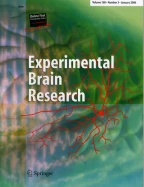Abstract.
When a person produces isometric force with one, two, or three fingers, the other fingers of the hand also produce a certain force. Enslaving is the involuntary force production by fingers not explicitly involved in a force-production task. This study explored the enslaving effects (EE) in multi-finger tasks in which the contributions of the flexor digitorum profundus (FDP), flexor digitorum superficialis (FDS), and intrinsic muscles (INT) were manipulated. A new experimental technique was developed that allows the redistribution of the muscle activity between the FDP, FDS, and INT muscles. In the experiment, ten subjects were instructed to perform maximal voluntary contractions with all possible one-, two-, three-, and four-finger combinations. The point of force application was changed in parallel for the index, middle, ring, and little fingers from the middle of the distal phalanx, to the distal interphalangeal joint, and then to the proximal interphalangeal joint. It was found that: (1) the EE of similar amplitude were present in various experimental conditions that involved different muscle groups for force production; (2) the EE were large on average – the slave fingers could produce forces reaching 67.5% of the maximal forces produced by themselves in a single-finger task; (3) the EE were larger for neighboring fingers; and (4) the EE were non-additive – in most cases, the EE from two or three fingers were smaller than the EE from at least one finger. EE among different muscles suggest a widespread neural interaction among the structures controlling flexor muscles in the hand as the main mechanism of finger enslaving.
Similar content being viewed by others
Author information
Authors and Affiliations
Additional information
Electronic Publication
Rights and permissions
About this article
Cite this article
Zatsiorsky, V., Li, ZM. & Latash, M. Enslaving effects in multi-finger force production. Exp Brain Res 131, 187–195 (2000). https://doi.org/10.1007/s002219900261
Received:
Accepted:
Issue Date:
DOI: https://doi.org/10.1007/s002219900261
